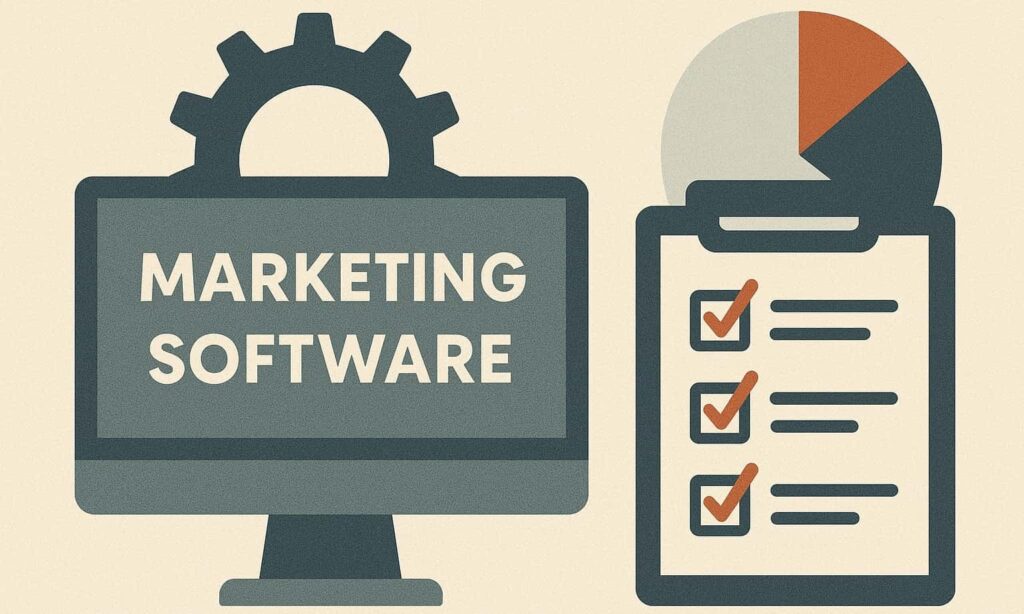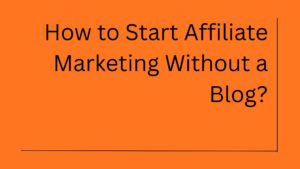Picking the right marketing software can feel like way too much at first. There are just so many options, so many features, and so many promises being thrown your way. If you’re not particularly into tech, or even if you are, it’s easy to get overwhelmed. But here’s the truth: finding the right marketing software isn’t about picking the one with the most bells and whistles. It’s about picking the one that actually fits the way your business works.
Let’s look at the three core things that really matter when choosing a marketing software tool. Get these right, and everything else gets a lot easier.
Three Key Factors for Choosing Digital Marketing Software Tools
1. Value Over Just Price: Don’t Fall for the Shiny Stuff
Understanding the true cost of marketing software goes far beyond the monthly subscription fee displayed on a vendor’s pricing page. Many businesses make the critical mistake of focusing solely on upfront costs, only to discover hidden expenses that can triple their initial budget within the first year. These unexpected costs often include premium integrations, additional user licenses, advanced reporting features, extra storage capacity, and professional services for setup and training.
The concept of total cost of ownership (TCO) becomes crucial when evaluating marketing tools. This includes not just the software price, but also implementation costs, training expenses, ongoing maintenance, potential downtime costs, and the opportunity cost of switching platforms later. Smart businesses calculate TCO over a 2-3 year period to get a realistic picture of their investment.
Consider the pricing model carefully some tools charge per contact in your database, others per active user, and some use a combination approach. A tool that seems expensive per user might actually be more cost-effective if it eliminates the need for multiple other platforms. Additionally, examine what happens as you scale: does pricing increase linearly, or are there sudden jumps at certain thresholds that could impact your growth plans?
Yes, price matters. Obviously. But price alone shouldn’t be the deciding factor.
Some tools look affordable at first, but once you start adding the must-have features or extra users, the cost shoots up. Others might be packed with functionality you don’t need, and that just adds complexity. Or worse, they promise a lot but don’t play well with your existing tools.
So what should you do?
- Set a clear budget, but build it around your real needs.
- Start by listing non-negotiables (the things you must have).
- Then jot down the nice-to-haves and the things you can skip.
Also, think long term. Can this tool grow with you? Will it still work when your team expands or when you scale your campaigns? Hidden future costs matter more than one-time discounts.
2. Simplicity vs. Customization: Find Your Sweet Spot
The balance between simplicity and customization represents one of the most challenging decisions in software selection, particularly for marketing teams with varying technical expertise. This balance directly impacts user adoption, time-to-value, and long-term satisfaction with your chosen platform. Over-engineered solutions with excessive customization options often lead to analysis paralysis, where teams spend more time configuring the tool than actually using it for marketing activities.
Research shows that marketing teams are most productive when they can achieve 80% of their goals using out-of-the-box functionality, with the remaining 20% handled through simple customizations. This principle, often called the 80/20 rule of software adoption, helps teams avoid the trap of endless configuration cycles that delay implementation and reduce ROI.
Consider your team’s technical maturity and available resources for ongoing platform management. A highly customizable platform might seem attractive initially, but if it requires dedicated technical resources to maintain, the ongoing costs and complexity may outweigh the benefits. Conversely, overly rigid platforms may force workarounds that create inefficiencies and limit your marketing effectiveness as strategies evolve.
Evaluate the learning curve realistically, how long will it take new team members to become productive? What happens when key personnel leave? The best marketing software strikes a balance where basic functions are intuitive, advanced features are accessible when needed, and the platform can evolve with your growing sophistication without requiring a complete overhaul.
Marketing teams often want tools they can tweak and personalize to the tiniest detail. Sounds ideal, right? But overly complex software can slow you down fast.
Software customization is great until it becomes a burden.
If it takes weeks to configure or requires constant hand-holding from the vendor, you’ll eventually dread using it. On the flip side, too little flexibility can make a platform feel rigid and limiting. So you have to strike a balance.
Ask yourself:
- How tech-savvy is your team?
- Do you need a lot of flexibility, or just a few key features to work really well?
- Can this tool grow with changing campaigns, or will it require expensive overhauls later?
The goal is to pick something intuitive enough for daily use but still flexible enough to adapt to your strategy as it evolves.
3. Real Needs First: Define What Actually Matters to You
Conducting a thorough needs assessment before evaluating any marketing software prevents feature creep and ensures your investment directly addresses business challenges. This process involves mapping your current marketing workflows, identifying specific pain points, quantifying the impact of these issues, and establishing clear success metrics for any new solution. Without this foundation, teams often get distracted by impressive demos showcasing features they’ll never use while overlooking gaps in areas critical to their success.
Start by documenting your current marketing process from lead generation through conversion and retention. Where do bottlenecks occur? What manual tasks consume disproportionate time? Which data integration challenges create reporting delays? These insights help prioritize features that will deliver immediate value versus nice-to-have capabilities that may never be utilized.
Involve stakeholders from different departments early in the assessment process. Marketing automation affects sales handoffs, customer service interactions, and product feedback loops. Understanding these cross-functional requirements prevents selecting a tool that optimizes marketing operations while creating friction elsewhere in the customer journey.
Define both immediate needs and anticipated future requirements based on realistic growth projections. However, avoid the trap of over-engineering for hypothetical future scenarios. Focus on tools that can scale naturally with your business rather than platforms that require significant customization to handle basic growth. The best marketing software grows with you organically, adding capability as your needs mature without forcing premature complexity.
Before you even open a product page or watch a demo, take a step back.
Ask yourself: What am I really trying to fix or improve?
Maybe your current system can’t handle automated email campaigns. Or maybe you’re struggling to track leads. Whatever the issue is, defining that clearly will stop you from getting distracted by irrelevant features.
Make a checklist:
- What problems are we facing now?
- What’s absolutely essential to solve those?
- What does the team actually need to do their job better?
Also, think about the future. Can this tool evolve with your team’s needs next year? Or will you be shopping again in six months?
Talk to the people who’ll actually use the software. Their feedback might highlight real pain points that the decision-makers haven’t even thought of.
How to Find and Evaluate Your Marketing Software Vendor
Vendor evaluation extends far beyond product capabilities to encompass the stability, support quality, and strategic direction of the company behind your chosen marketing software. This relationship will significantly impact your long-term success, making vendor assessment as crucial as feature evaluation. Consider the vendor’s financial health, market position, customer retention rates, and track record of innovation when making your decision.
Research the vendor’s customer support philosophy and resources. Do they offer multiple support channels? What are their typical response times for different issue severities? How comprehensive is their documentation and training resources? Many vendors promise excellent support during the sales process, but actual support quality becomes apparent only after implementation. Request references from similar-sized businesses in your industry to get realistic expectations about the support experience.
Examine the vendor’s product roadmap and their software developmental philosophy. Are they actively investing in platform improvements? How do they gather and incorporate customer feedback? What’s their approach to emerging technologies like AI and machine learning? Understanding their strategic direction helps ensure your chosen platform will remain competitive and continue meeting your evolving needs over time.
Picking the right tool is only half the job. The other half? Picking the right people behind it.
Your marketing software is only as good as the team that supports it. So don’t rush this part.
Take time to evaluate the vendor how they operate, what kind of support they offer, and whether they’re in it for the long haul. You’re not just buying a product; you’re starting a relationship.
Here’s how to approach it:
- Do some digging. Look at user review sites like Capterra. Focus on feedback from businesses like yours.
- Request demos. Don’t rely on screenshots or sales decks. Ask for a real walkthrough and bring your team in on it.
- Talk to customer support. Seriously. Just email them a basic question and see how fast and helpful the response is.
- Ask about updates. Are they innovating? Or is the product basically frozen in time?
- Integration check. Make sure the software plays nice with your CRM, analytics tools, email systems, and anything else you already use.
The right vendor won’t just sell you something, they’ll help you make it work.
Creating a Focused Feature List for Your Marketing Tool
Developing a comprehensive yet focused feature list requires balancing current operational needs with strategic marketing objectives while avoiding the trap of feature bloat that complicates decision-making and increases costs. This process begins with mapping your marketing funnel and identifying where technology can create the most significant impact on lead quality, conversion rates, and customer lifetime value.
Prioritize features that directly support your primary marketing channels and tactics. If email marketing drives 60% of your leads, robust email automation capabilities should rank higher than social media management features. This channel-specific prioritization ensures your investment delivers measurable returns in areas that matter most to your business outcomes.
Consider integration requirements carefully, as marketing software rarely operates in isolation. Your feature list should account for data flow between systems, ensuring seamless connections with your CRM, analytics platforms, content management systems, and e-commerce tools. Native integrations typically provide better reliability and data consistency than third-party connectors, making them worth prioritizing even if they limit your options.
Build flexibility into your feature evaluation by considering how requirements might evolve as your marketing sophistication grows. Features that seem unnecessary today might become critical as you develop more advanced segmentation strategies, implement account-based marketing, or expand into new channels. However, resist the urge to pay for capabilities you won’t use for years. Technology evolves rapidly, and today’s advanced features may be standard offerings by the time you need them.
Before you even start browsing software options, get clear on what you actually need.
It’s easy to get distracted by flashy dashboards and endless features. But unless those features solve a real problem for your team, they’re just noise.
So what’s the move?
Start with a list. Keep it tight. Break it into three parts:
- Must-haves. These are the non-negotiables: maybe automated campaign scheduling, customizable email templates, or CRM integration.
- Nice-to-haves. Helpful features, but not deal-breakers. Think things like AI suggestions or built-in landing page builders.
- Don’t-needs. Stuff that looks cool but doesn’t serve your goals. Calling it out early keeps you focused.
Also consider:
- Who’s using the tool daily? Get their input before you commit.
- What’s your workflow like? The features should align with how you already do things, not force a complete reset.
- What can you grow into? Leave room for your team’s needs to evolve.
Having this list in hand keeps the search grounded. It helps you ignore the fluff and zoom in on what actually matters.
Final Thought
Choosing marketing software is ultimately about knowing how to choose the right marketing tool that amplifies your team’s existing strengths while addressing genuine operational challenges. The most successful implementations occur when businesses resist the temptation to completely overhaul their processes and instead select platforms that enhance their current workflows with improved efficiency and capabilities.
Remember that software selection is just the beginning of your journey. The real value emerges during implementation, user adoption, and ongoing optimization. Even the perfect tool on paper can fail if your team doesn’t embrace it or if the rollout lacks proper planning and training. Conversely, a simpler platform with strong user adoption often delivers better results than a feature-rich solution that sits underutilized.
Plan for a transition period where productivity may temporarily decrease as your team learns the new system. Build buffer time into your timeline and consider running parallel systems during the initial weeks to ensure business continuity. Most importantly, establish clear metrics for success beyond just feature utilization, track improvements in lead quality, campaign performance, and team efficiency to validate your investment decision.
The marketing software landscape continues evolving rapidly, with new solutions emerging regularly and existing platforms adding capabilities. While this creates exciting opportunities, it also means your perfect solution today might need reevaluation in 2-3 years. Choose platforms that demonstrate consistent innovation and have strong track records of adapting to market changes rather than chasing the newest entrant with limited proven results.
The best marketing software isn’t the most popular or most expensive one; it’s the one that fits you. The one that makes your team’s life easier. The one that helps you do what you’re already trying to do, but better.
So take your time. Try a few. And don’t just buy the hype, buy what works.

The Chief Author and Editor at Intothecommerce. As a seasoned expert in digital marketing, I direct the site’s strategic content and ensure every piece meets the highest industry standards. My insights drive our coverage on SEO, paid media, and cutting-edge marketing technology.






2 thoughts on “Top 3 Factors to Consider When Choosing a Marketing Software Tool”
Thanks for sharing. I read many of your blog posts on software tools, cool, your blog is very good.
Great insights! I believe in the next 5 years, software selection for businesses will heavily rely on AI, automation, and seamless integration. Companies will look for tools that are scalable, flexible, and user-friendly, while also prioritizing data security and improving customer experiences to stay ahead in a competitive market.